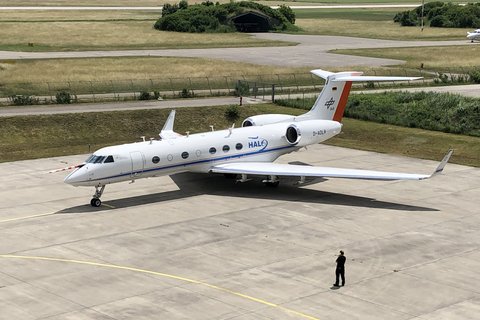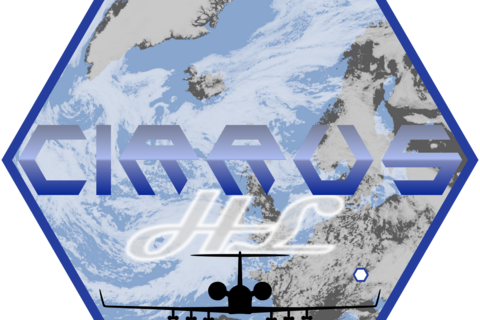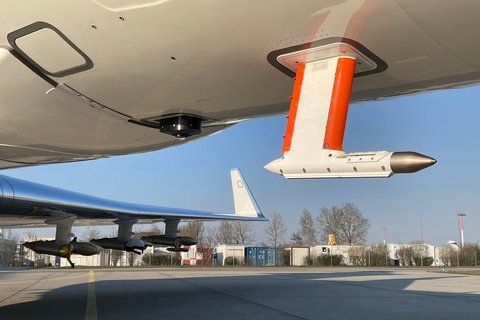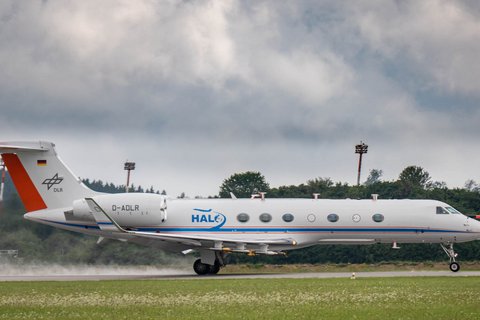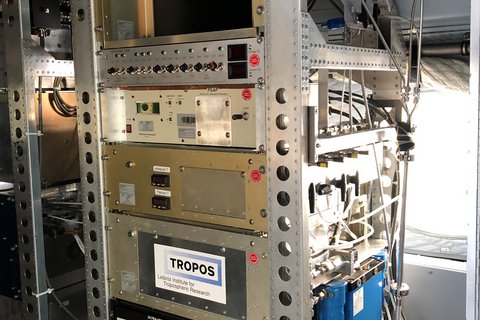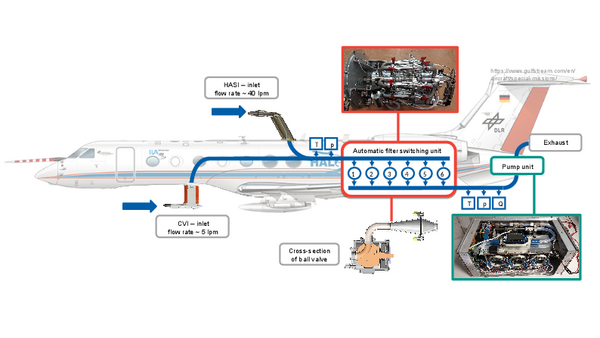The German research aircraft HALO (High Altitude and Long Range Research Aircraft) provides an excellent platform for in-situ and remote sensing measurements due to its range of up to 10000 km, flight altitude of up to 15 km, and flight duration of up to 10 hours.
In summer 2021, TROPOS participated with two experiments in the CIRRUS-HL mission to investigate the formation, properties and climate impact of cirrus clouds in mid and high latitudes. CIRRUS-HL was the third HALO campaign with contributions by TROPOS, after ML-CIRRUS and ACRIDICON-CHUVA (both in 2014).
HALO-CVI
For cloud research with HALO, a specially designed CVI inlet (HALO-CVI) was developed at TROPOS and realised in engineering terms by the company enviscope GmbH. By means of the CVI inlet droplets and ice crystals can be collected during flight through atmospheric clouds. After the hydrometeors have dried in the HALO-CVI, their residual particles are then chemically and microphysically characterised in the aircraft cabin in cooperation with other research groups. From this, conclusions can be drawn about the formation of liquid, mixed-phase and ice clouds. TROPOS carry out measurements of the residual number concentration and size distribution, as well as their black carbon content and the collected condensed water content. Furthermore, residual particles are collected onto filters for ice nucleating particle analysis.
In 2014, TROPOS was involved with the HALO-CVI system in the first HALO cloud missions ML-CIRRUS (mid-latitude cirrus clouds) and ACRIDICON-CHUVA (high range convective clouds in the tropics). From 2018 to 2021, the repositioning of the HALO-CVI from the upper to the lower fuselage was technically further developed and aircraft-certified. This achieves a significantly better inflow and thus a representative collection of cloud particles. From May to July 2021, this optimised sampling position could already be used on the HALO mission CIRRUS-HL. Ice particle residuals in natural cirrus clouds of medium and high latitudes, contrail cirrus clouds and soot cirrus clouds were measured by the HALO-CVI.
The above-mentioned HALO research missions and technical developments of the HALO-CVI were funded by the German Research Foundation (DFG priority programme 1294; project numbers 48902976 and 442648163) and co-financed by the Max Planck Society.
HERA4HALO
The newly-developed high-volume flow aerosol particle filter sampler HERA was deployed on HALO for the first time during CIRRUS-HL in 2021. HERA is a TROPOS design and was realized in close cooperation with enviscope GmbH. HERA is a modular device consisting of a sampling unit and a powerful pump unit which are connected to the aircraft inlets. The sampling unit is designed as a 7-way valve, enabling switching between 6 polycarbonate membrane filters and a bypass, with one filter being sampled at a time. During CIRRUS-HL, HERA was connected to the HASI inlet outside of clouds for sampling aerosol particles and the CVI inlet inside clouds for sampling ice particle residuals.
Filters are analyzed for ice nucleating particle (INP) concentrations using off-line instrumentation. First results from CIRRUS-HL show low but measurable INP concentrations which vary depending on sampling location, flight altitude, and air mass origin. Further analyses, e.g., investigation of bulk chemical composition, are possible and will be used for interpretation of INP results together with collocated measurements of aerosol and ice particle residual properties and cloud microphysics from the campaign.
The development of HERA and the participation in CIRRUS-HL are funded by the German Research Foundation (DFG priority programme 1294; project numbers 316508271, 442648163).

